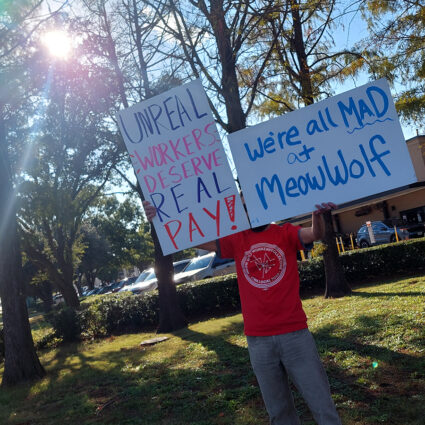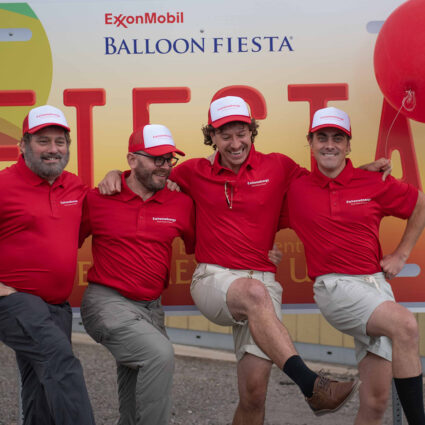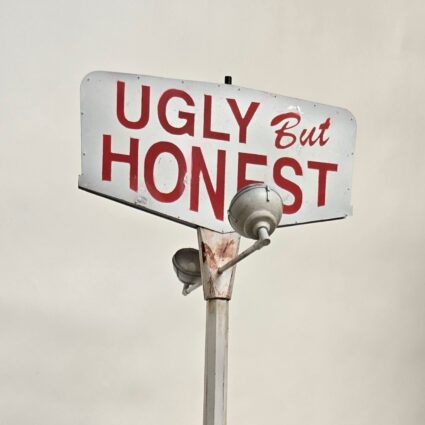Artists descended on downtown Albuquerque, a “ghost town” after the pandemic, for two weeks to paint the boarded-up windows in a joyful creative event, transforming a bleak environment into public art in a project spearheaded by local arts nonprofit OT Circus.
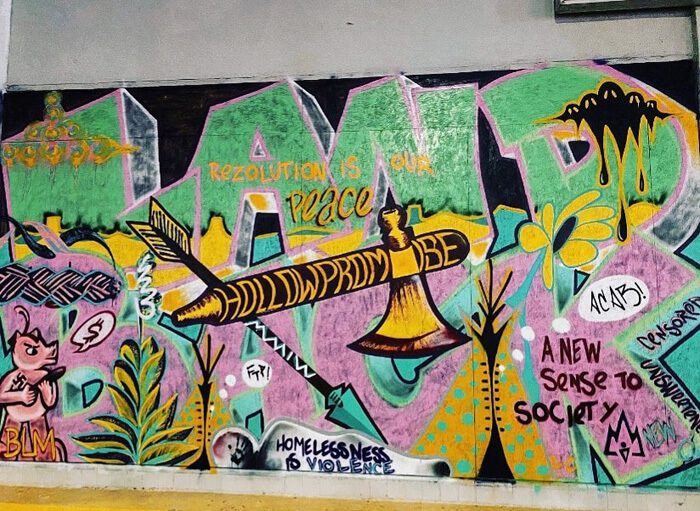
Passersby walking in downtown Albuquerque during the July quarantine may have noticed that the boarded-up windows—many put up by businesses during the shutdown, and others broken during a night of rioting after the peaceful protests over the murder of George Floyd in Minneapolis on June 1—had been covered by a multitude of bright paintings.
It was a remarkable reframing of what could have been considered a desolate, grim scene; between the pandemic shutdown and the night of rioting, downtown Albuquerque felt almost abandoned. The citizens who were there seemed divided between the determined walkers and the slightly more jovial homeless. Looking at the painted boards around every corner, at the evident imagination, passion, and color poured into their making, gave the passerby a playful sense of welcome. Any place that values art enough to put it on its broken windows—now that’s an oasis of civilization.
Victoria Van Dame, executive director of the non-profit arts organization OT Circus, observed two artists painting boards on 2nd Street. She asked them to paint a mural on the wall of OT Circus, paying them through a micro-grant from the city. It occurred to her then that artists could be recruited to paint on the boarded windows all over downtown Albuquerque.
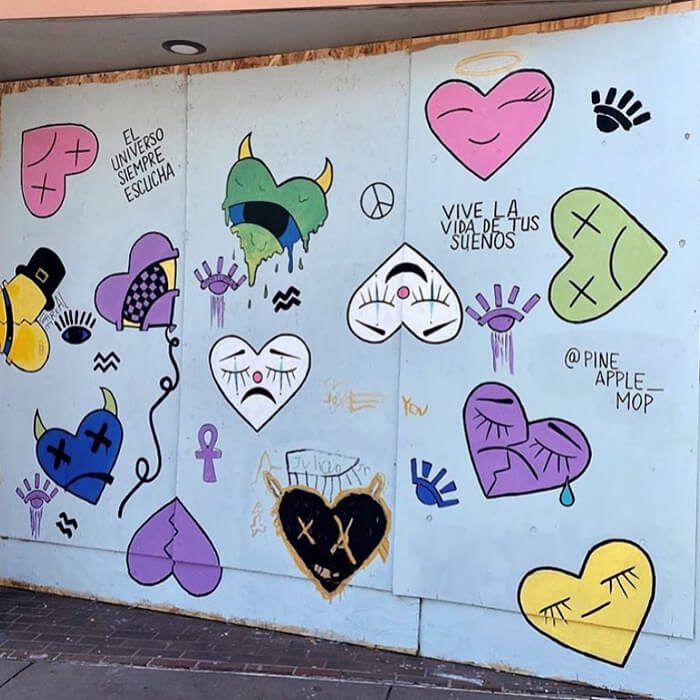
“It is better to ask forgiveness than permission,” says Victoria Van Dame somewhat enigmatically. She asked Jessica Anderson to help her organize the event, called Paint for Peace 505. They put out the word on Facebook and Instagram. “One little post… the whole thing moved so fast it was hard to organize, and then we had to straighten things out afterward.”
Jessica Anderson echoes this perception: “It was a lot of unstructured activity that came together and [somehow] worked out.” She says, “There was no submission needed, there were people of all art backgrounds—from professional artists to first-time artists—who were able to take part. I just told people to keep it positive and peaceful. We ran it by some people Victoria knows at the City, and we were able to reach out to businesses. We told people ‘just paint on the [City] boards,’ but then they started to paint on every board.”
Anderson contacted those establishments afterward. The vast majority of them were fine with the painting. By the end, 175 boards were painted in downtown Albuquerque. For two weeks, artists descended on downtown and the streets were full of people painting.
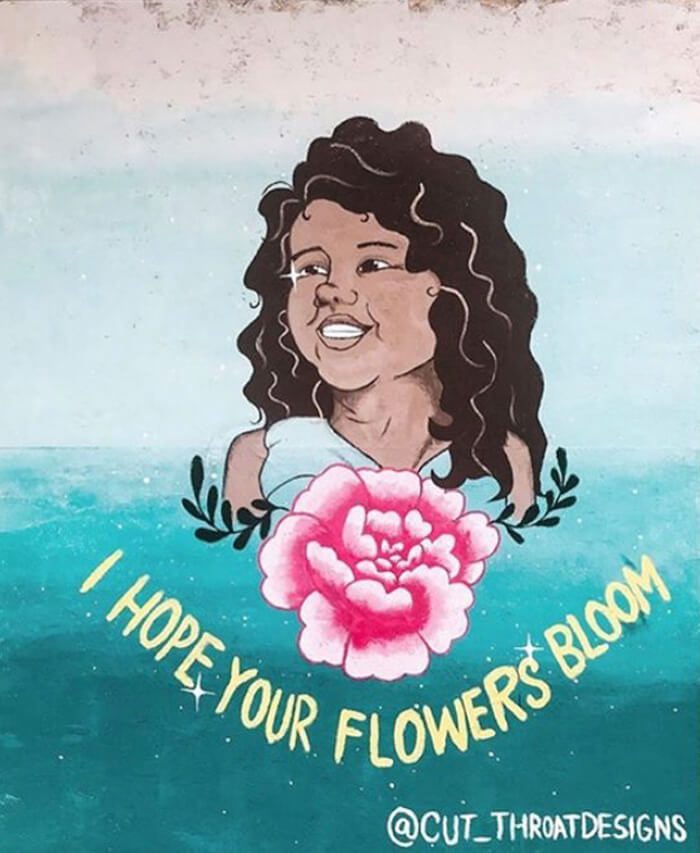
Artist Matthew Farner heard about the project through a friend. His board was on 5th Street. “Watching all these artists paint, this was the coolest thing Albuquerque has done.” He brought his own ladder and paint. “In these troubling times, when people are acting so ugly, this brought a little light. People came together, shared equipment. I didn’t know any of the artists on my block, but we all became close friends. Some of the paintings were political, some were art for art’s sake.”
It was about thirty hours of work over the course of three days, in 102-degree heat, he says, but he loved it. If his board is auctioned, he intends to donate the proceeds to a Black Lives Matter charity.
Madeline Mariposa, another artist, saw the Facebook post and drove over to look at the scene. “I said, ‘I need to be a part of this!’ And they gave me a board. It brought people together in a colorful way.” In a phrase used by several of those interviewed, she says, “Downtown was like a ghost town.”
“We came out of quarantine in a safe way,” she adds.
After Paint for Peace 505 was completed, Jessica Anderson was fired from her job at a call center for taking too much time off to work on it. “That was scary, [but] I just thought this was more important,” she says. She now works with various arts organizations.
The plan for the boards, which were mostly taken down in mid-August, is to display them in a city “mural garden,” or perhaps in the abandoned Kress Building. Another plan, if the pandemic allows it, is to have an anniversary festival of Paint for Peace 505 in 2021, with music outside and artists once again painting the town. There is something peculiarly Albuquerque (whose area code is, of course, 505) in Paint for Peace 505. It has something to do with the contrast between the rough material—plywood boards—that was used to make art versus the generosity of spirit that transformed it into artwork. Albuquerque, alongside its genuinely sketchy appearance, amid its harshly beautiful landscape, also has a bizarre quality of anarchic friendliness that cuts across barriers.
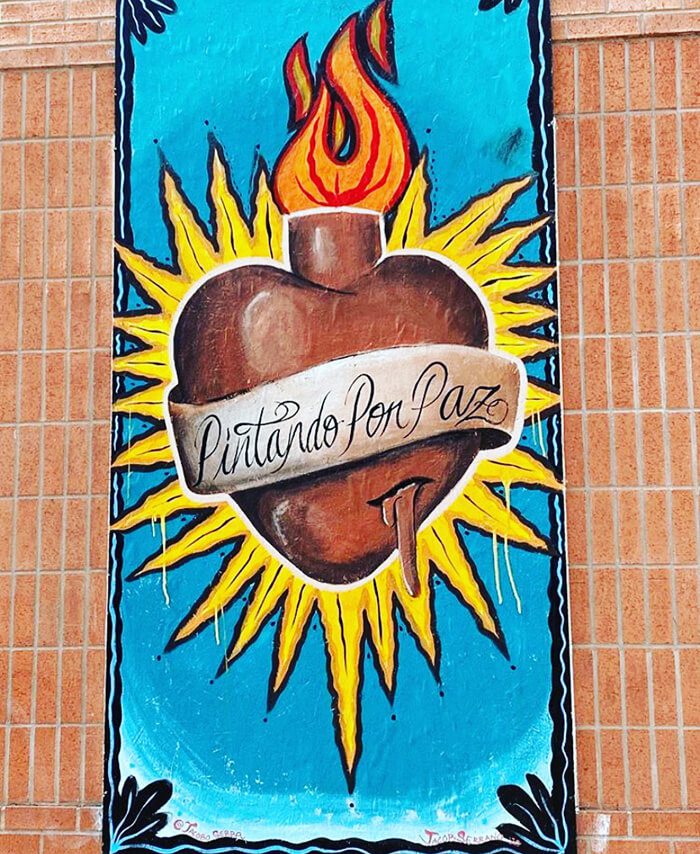
Thanks to Jennifer Desantis of OT Circus for her help in this article.
